TYPES OF COMPRESSORS
Main types of compressors used in industrial refrigeration are screw, piston, centrifugal and rotary vane. Another type, which is produced in large quantities, a scroll compressor, but still these compressors are not available in the amount normally encountered in industrial refrigeration. Rotary vane compressors are still used as a low stage compressors, but very little installed.
Centrifugal compressors are standard in large chemical and processing industry, where they are driven by electric or steam or gas turbine. Centrifugal compressors are also used extensively for water cooling in air-conditioning systems. Manufacturers use such refrigerants R-123 and R-134a in these packages. After condensation of a long list of types of compressors, two that are left and those that will be discussed in this book, reciprocating and screw compressors. This Chapter focuses on reciprocating compressors, and Chapter 5 concentrates on screw compressors.
Two styles of construction compressors are open and hermetically sealed. In open-type compressor, as shown in Fig.
4.1, shaft extends compressor and externally connected to an electric motor which drives the compressor. In a hermetically sealed motor-compressor, the entire Assembly is encapsulated and only line of the refrigerant and the electrical connections, and not rotating shaft penetrate into the housing. These sealed units are always used for household refrigerators, window-type air conditioners, and other small appliances. They should work for decades without refrigerant leakage.
A few more semi-hermetic reciprocating compressors, where the heads of the compressors can be removed to gain access to pistons and valves for maintenance. - Semi-hermetic compressors available on the market, as a rule, limited to the maximum cooling capacity of approximately 150 kW (40 tons of cooling).
In hermetic or semi-hermetic block, the refrigerant is in contact with the motor windings Halocarbon refrigerants that do not attack the copper used in this type of compressor. Because ammonia will react with copper, ammonia compressors of open type. At one time the shaft seal was alarming, the cause of the leak of ammonia, but the quality of the shaft seal is gradually improving. However, development pressurized ammonia compressor remains attractive goals and approaches such as the use of aluminium windings encapsulation rotor so that the ammonia contact engine windings1, or connecting the motor and the compressor through the magnetic drive2 all approaches is considered. On the other hand, open-type compressor is typically more efficient than hermetic type, because the suction couple in hermetic compressor enters the engine to cool down, and in this superheated steam, which requires more energy to compress.
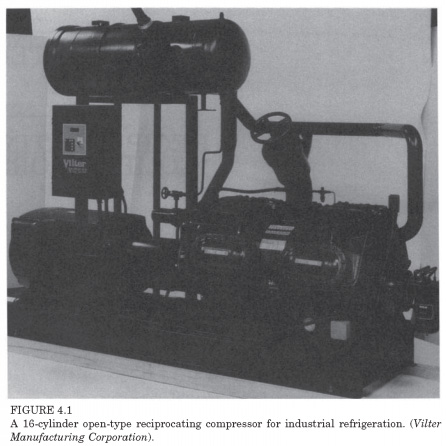
Central attention in this Chapter : the effect of suction and discharge pressure of the cooling capacity and power consumption. Suction and discharge pressure the main influence on the rest of the system of the compressor. The nature of the cooling load on the evaporator strongly affects the suction pressure and the external conditions of transfer across the capacitor control the discharge pressure. The characteristics that are most important for the user compressor cooling capacity and power consumption. The compressor has a dominant influence on system performance, therefore, the ability to predict the consequences of changes in the conditions imposed on the system, such as the temperature of the liquid in the evaporator or the temperature at the condenser requires an understanding of the performance of the compressor. Some idealizations initially basis explaining specifications, and then the Chapter shows that these idealized trends prevail in the real compressors. In the last part of the Chapter describes some of the capabilities and limitations of piston compressors, and describes assistive devices for reliable operation.
Piston Compressors
Piston compressors are one of the most widely used types of refrigeration compressors. They piston and cylinder as the location of the car engine. Reciprocating motion of the piston due to external forces compresses the refrigerant inside the cylinder. There are three types of piston compressors: hermetic, semi-hermetically closed and open-ended. Open piston compressors can be of the same type cylinder or multi-cylinder type.
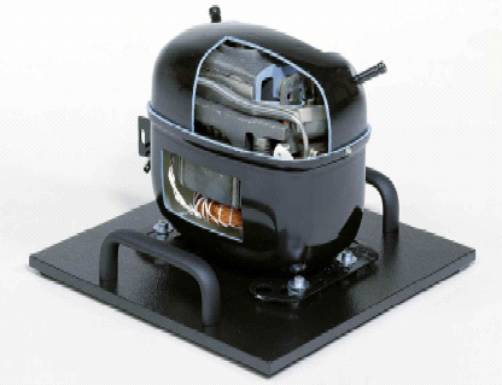
Screw Compressors
piston compressors and used widely. It can be used as refrigerants R12, R22, and others.
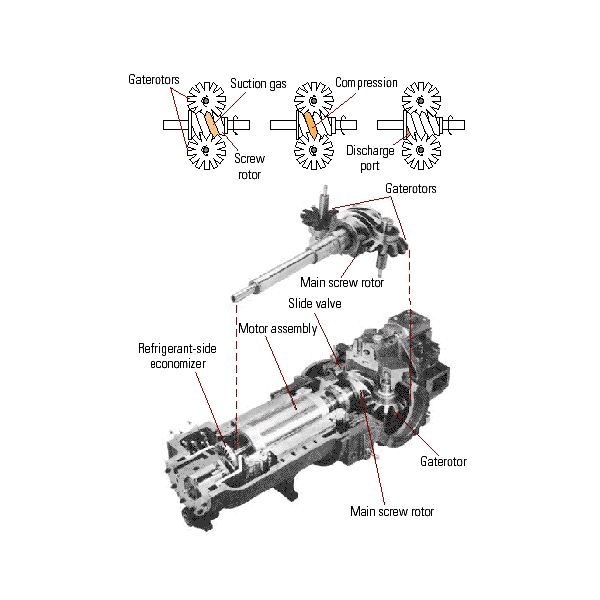
Rotary Compressors
rotary compressors has two rotating elements, like gears, between which the refrigerant is compressed. These compressors can pump refrigerant below or moderate the pressure of condensation. Because they can handle small amounts of gas, and produce less pressure, they are used in fewer applications.
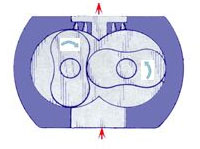
Centrifugal Compressor
The centrifugal compressor impeller or blower, which can handle large volumes of gas, but at a relatively low pressure of condensation. It is suitable for work with refrigerants such as R-11, R-113 and other
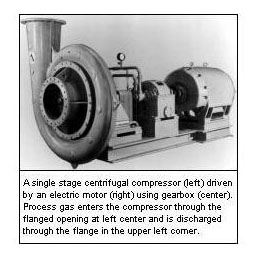
spiral Compressors
Scroll compressor consists of two interleaved scrolls, one of which is fixed and the other to the eccentricity of the orbit without rotation. During its motion with small gaps are created between the scrolls, where the refrigerant is compressed. Scrolls can have different shape, as involute, Archimedean spiral, or hybrid curve. In other arrangement scrolls can turn its beating to recompress.
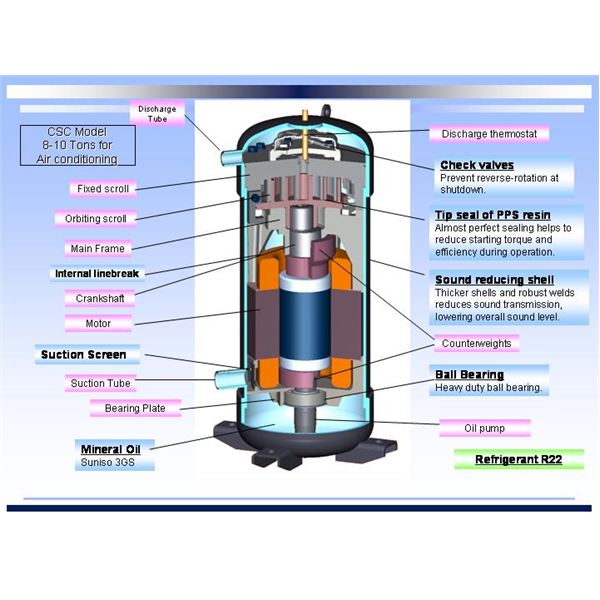 .. ..
|





 ..
..